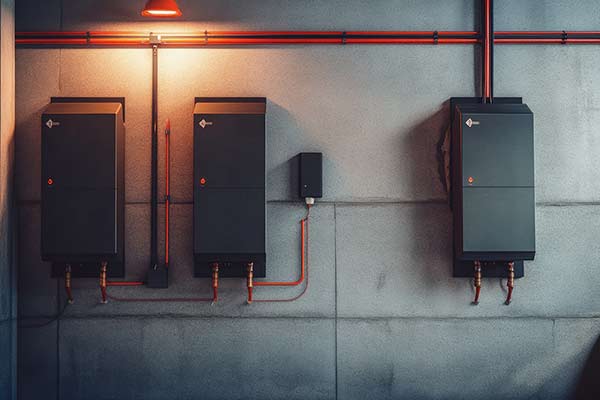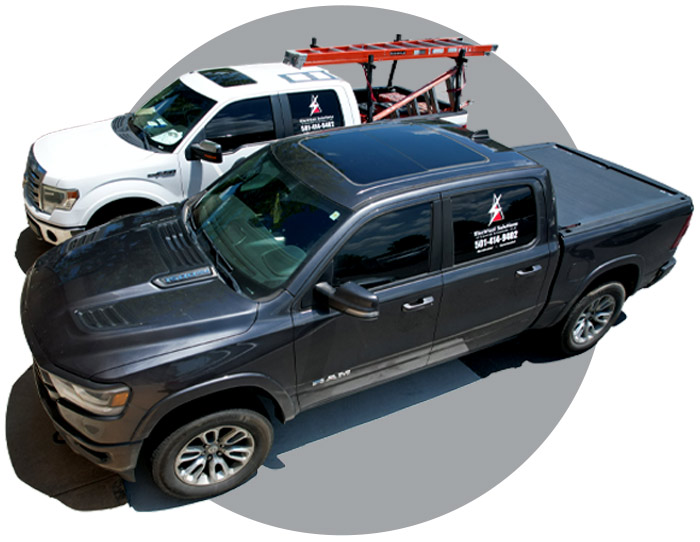Backup Generators Explained
Standby backup generators are permanently installed units that automatically activate during a power outage caused by storms, natural disasters or grid failures. They are connected to a home’s electrical system and can run on various fuel sources like natural gas or propane. A standby generator is capable of powering an entire home for extended periods of time.
How Does a Standby Generator Work
A standby generator works by automatically providing backup power during an outage. This automated process ensures seamless power transition during outages, maintaining electricity for critical home systems without manual intervention. Here’s how the process unfolds:

Detection and Activation
The generator's control panel constantly monitors incoming utility power. When a power outage is detected, the generator automatically starts up within seconds.
Power Generation
The engine, typically fueled by natural gas or propane, begins running. The alternator converts the engine's mechanical energy into electrical power.
Power Transfer
The Automatic Transfer Switch (ATS) disconnects the home from the utility grid. The ATS then connects the home's electrical system to the generator. This transfer process typically takes 10-20 seconds.
Powering the Home
The generator supplies electricity to essential circuits and appliances. A voltage regulator ensures stable power output.
Restoration of Utility Power
When grid power is restored, the ATS detects it. The ATS switches the home back to utility power. The generator automatically shuts down after a cool-down period.
Types of Appliances Powered by Standby Generators
A whole-house standby generator is capable of powering your entire home, including all hardwired systems and large appliances. The specific capacity will depend on the size of the generator installed. Here are the main types of appliances and devices a standby generator can typically power:
- Essential Appliances
• Refrigerators and freezers
• Electric stoves and ovens
• Microwave ovens
• Dishwashers
• Washing machines and dryers - Climate Control Systems
• Central air conditioning units
• Heating systems and furnaces
• Electric fan heaters - Home Systems
• Lighting throughout the house
• Security lighting
• Sump pumps
• Well pumps
• Garage door openers - Electronics and Communication
• Computers and laptops
• Television sets
• Phone chargers and other small electronics - Other Appliances
• Coffee makers
• Water heaters

Our Standby Generator Installation Process
Installing a standby generator involves several key steps performed by qualified professionals and typically takes 1-2 days. Here’s an overview of our installation process:

Site Preparation
A suitable location is chosen outside your home that meets code requirements and is accessible for maintenance. The area is cleared and a pre-cast concrete pad is installed over a compacted gravel bed.Generator Placement
The generator is delivered and positioned on the concrete pad. It is then leveled and secured to the pad using stainless steel bolts.Fuel and Electrical Connections
A trench is dug from the generator to the gas meter. A new high-pressure gas line is then installed and connected to the meter.Transfer Switch Installation
An electrical sub-panel with a transfer switch is installed beside your home’s main electrical panel. Critical circuits are redirected from the main panel to the sub-panel. The generator is then connected to the transfer switch.Testing
The generator system is tested to ensure a seamless transfer of power and proper function.
Benefits of a Backup Generator
Backup generators serve as essential tools for maintaining power during outages. Knowing that your home is equipped with a reliable backup power source provides significant peace of mind. Here are other key benefits:
Automatic Power Restoration
Standby generators automatically turn on within seconds of detecting a power outage, ensuring that your home remains powered without any manual intervention.
Protection for Essential Appliances
A standby generator keeps critical appliances running, such as refrigerators, freezers, and medical equipment. This protection helps prevent food spoilage and ensures that essential devices remain operational.
Enhanced Home Security
During a power outage, security systems can fail, leaving homes vulnerable to break-ins. A standby generator maintains the functionality of alarms, surveillance cameras, and outdoor lighting, enhancing home security and deterring potential intruders.
Increased Comfort and Convenience
With a standby generator, you can maintain a comfortable indoor environment by keeping heating and cooling systems operational. This convenience allows you to continue daily activities like cooking and using electronic devices without interruption during outages.
Long-Term Cost Savings
Investing in a standby generator can save money in the long run by preventing losses associated with power outages, such as food spoilage and damage to sensitive electronics.
Increased Property Value
Having a standby generator can enhance your home’s resale value. Prospective buyers often view backup power systems as an attractive feature, especially in areas prone to frequent outages or extreme weather conditions.







